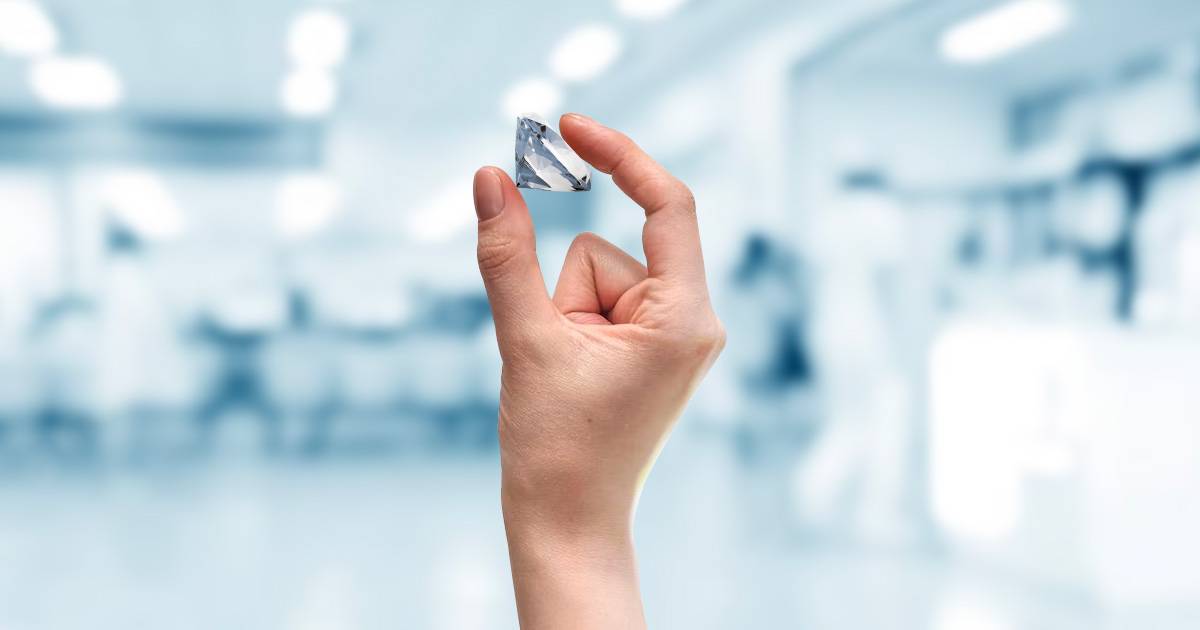Lab Grown Diamonds Pros and Cons: Factors to Consider

You might have come across the phrase “lab diamonds” earlier, but do you know what they truly are? Lab-made diamonds are genuine diamonds created in a laboratory. They have the same kind of stuff in them, the way they sparkle, and how they feel as diamonds that come from the ground. As you read on, you’ll discover the many lab grown diamonds pros and cons and how they’re produced. This knowledge will help you decide if getting a lab-created diamond is a good choice for you.
What is lab-grown diamond?
You can think of lab-created diamonds, sometimes called man-made diamonds, as diamonds that are made in a special lab instead of coming from the ground. These lab-made diamonds are just like the real ones in how they shine and how strong they are. You can’t really spot a difference just by looking at them. They’re made up of the same stuff and have the same kind of traits as diamonds that are naturally found in the earth. Even the Federal Trade Commission (FTC) considers them to be the same kind of precious gem.
How are they made?
Back in 1954, GE was the first to make lab-created diamonds. However, it wasn’t easy and took many years to make lab diamonds that look as stunning as real ones. Creating a diamond in a lab is kind of like the way diamonds are made in nature, but there’s a difference: one happens deep within the earth, while the other happens in a lab. The process used to make lab diamonds copies the conditions that shape natural diamonds, like really high temperatures and squeezing pressures that turn a type of carbon into a diamond.
Two ways lab-created diamonds are made
Manufacturers create lab diamonds in two different ways: High Pressure High Temperature (HPHT) and Chemical Deposition (CVD). Here’s how each process works:
HPHT: To make diamonds using this method, they start with a tiny diamond “seed” and mix it with carbon. This diamond seed is a small piece of a real diamond. They then put this mixture under super high heat and pressure, much hotter and squishier than you can imagine, like over 1,300 to 1,600 degrees Celsius (that’s really, really hot!) and pressure of about a million pounds per square inch (that’s like a ton of weight!). These crazy conditions copy what happens deep inside the earth where natural diamonds form. The carbon wraps around the diamond seed and cools down, creating a new diamond.
CVD: This process is like using a special gas to grow diamonds. They begin with a diamond seed, which is super important because it affects how the final lab diamond will turn out. Afterwards, they put the diamond seed inside a special chamber that has no air, and then they fill it up with gases full of carbon. They heat everything up to more than 1,000 degrees, and this turns the gases into something called “plasma.” The plasma helps to build up the layers of the new lab diamond, kind of like how building blocks stack up.
Pros and cons of lab diamonds
Below are the pros and cons of lab-grown diamonds, helping you make an informed decision before making that big purchase!
Benefits of lab grown diamonds
- Lab-created diamonds look and feel just like real diamonds, unlike other imitating stones. This is because they’re made with the same stuff and shine as real ones.
- Choosing a lab-created diamond means getting a bigger diamond without spending lots. They’re usually 30-50% cheaper than diamonds dug from the earth. This is because making them skips long processes and costly mining.
- Lab-created diamonds are good for the Earth and people. They don’t come from conflict zones, and they’re kinder to the environment. While they need energy, it’s less than what’s present in mining real diamonds, which hurts nature and communities.
- People really like lab-created diamonds more and more. So, you’ll find lots of jewelry made with them, like bracelets, rings, earrings, and necklaces.
Lab-created diamonds are easy to find and a good choice for being an ethical choice.
Drawbacks of lab-grown diamonds
- Thinking about trading your lab-grown diamond in the future? Be careful, its value might drop a lot.
- There are lots of lab-made diamonds, making them less valuable due to too many around.
- Buying a lab-made diamond might be cheaper now, but don’t expect to get back much later.
- Lab-made diamonds lack rarity and charm due to being its high volume availability.
Lab-grown vs Natural: Which should you pick?
In the end, you’ll need to think about the pros and cons of lab grown diamonds and natural ones and figure out what’s right for you. Take into account how much money you have, what you think about conflict-free diamonds, and how diamond mining affects the environment. Look up where to get lab-made diamonds and check if the brand is popular for being good, if they have a warranty, and their return rules.
Lab or Natural doesn’t matter as long as you’re happy
If you don’t have lots of money to spend but still want a diamond that’s harder to find or bigger, a lab diamond might be what you’re looking for. However, if you’re thinking about keeping the diamond for a really long time and if the story of where diamonds come from is important to you, it could be a good idea to wait and save up for a natural diamond that you’ll value forever.
